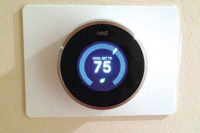
During a recent conversation at an industry trade show, a combination of interesting statements were made by a prominent HVAC contractor. He said that relationships between contractors and brick-and-mortar distributors were a foundation of the HVAC trade and that contractors would be hesitant to move away from that business relationship for many reasons. But he also acknowledged the presence of online buying. He said that it was “coming” and that it would soon be an important component of any contractor’s business model.
Is he right? Are more HVAC contractors using the Internet today than had planned to? Is online buying becoming just as important as one phone call and a pickup at the parts counter? Maybe the HVAC trade isn’t ready to concede that online buying will surpass local purchases or put a big hit on traditional relationships. Yet, online sellers are making themselves hard to ignore and are working to make the buying experience quick and convenient, while offering competitively priced products. In short, the 1,000-pound online-buying gorilla in the room is getting harder to ignore.
One of the most notable names in the parts distribution business - Grainger - reported that 24 percent of its sales in 2009 came from online sales. The company reported combined sales in its 400+ stores and Grainger.com of $2.7 billion in 2010. Paul Miller, vice president, Grainger eCommerce, said that buyers have discovered something just as important as saving money - and that is saving time. “Technology will continue to make it quicker, more convenient, and more efficient for customers to get what they need to get their jobs done,” he said.
“People buy HVAC products online for the same reason that they shop online for their personal needs - it’s quick, it saves driving around, you can shop when you want not [just] when the store is open. And you can be assured that the item is in stock,” said Mike Sackett, president of Controls Central.com. Headquartered in Brea, Calif., ControlsCentral.com advertises itself as the largest online HVACR controls store in the world. The company has 2.5 million parts in stock and 40,000 SKUs for customers to choose from.
Sackett said that overall online sales during the 2010 Christmas season were 15.4 percent over the previous year, according to MasterCard Advisors’ Spending Pulse report. “We expect the same kind of growth, if not greater, for our business,” he said.
John Graves, vice president, group buying for Buy Max, said that online buying is the more efficient model, but he does not discount the importance of having a brick-and-mortar presence. “Online buying is clearly a more efficient model than traditional locations, but we can never underestimate the value of building and maintaining a relationship built on trust with our customer,” he said.
“Excellence in product development and cutting edge technology combined with strong personal relationships are critical success factors.” BuyMax LLC is the group buying division of Direct Energy/Clockwork Home Services with 1,400 independent residential home service contractors in the HVAC, plumbing, electrical, and roofing sectors.
PROS OF ONLINE BUYING
Sackett believes that the sheer size of ControlsCentral.com’s inventory is a key driver of customers to his company’s website. “No brick and mortar store can match our inventory from 600 manufacturers,” he said.“Controlscentral.com has immediate access to the inventory of 33 distribution companies, all linked by a single ordering system. Among all of our companies, there are specialists in every type of HVAC product - from building automation through refrigeration - so we can provide products that a local distributor is unlikely to stock.”
Sackett said that with one phone call or log-in, buyers can have access to 130 stocking locations across the U.S. “Here’s an example from a recent client,” he said. “A caller wanted four commercial grade transformers. He couldn’t find them locally; these units are 3,100 pounds each. We sourced it for him, because we are able to draw from such a large inventory. Even if we don’t have everything that a buyer needs in stock, we will get it for them.”
Miller said that Grainger also hangs its hat on its large inventory of parts. “Buyers can access a broad assortment of products and services that are relevant to their specific needs,” he said.
“Customers can view their purchase history, set up personal lists for the things they order frequently, and be in and out in a few clicks. So, whether it’s making sure your workers have the right safety equipment and safety training or purchasing energy-efficient products to help your customers achieve their sustainability goals, the process is very quick and efficient.”
Graves noted that BuyMax offers services to its contractor members that are very similar to those at brick-and-mortar suppliers. “Online buying enables our members to access our products and training 24/7/365,” he said. “In addition, we know that education is the key and we get the value proposition out via multiple webinars, phone calls, on-site training and mass audience presentations - driving members to our site.”
PROS OF BRICK-AND-MORTAR
Besides the obvious “coffee, donuts, and conversation” at the parts counter, there are other reasons why contractors continue to rely on their traditional relationships with local suppliers. Training and support, especially when parts may be needed during non-business hours, are also trademarks of brick-and-mortar businesses.Graves said local suppliers have one distinct advantage over online sellers. “If the contractor needs the product today, there is no better solution than a brick-and-mortar location, assuming inventory is available,” he said. “However, the race is on to develop the most efficient and cost-effective method to deliver products and services to the contractor. If you really think about it, most brick-and-mortar distributors have developed a hybrid model that includes online ordering to capture the customer who prefers an online transaction.”
Miller said that in-person customer service is still an important benefit of buying locally. “Customers have historically valued our branches (stores) because of the great, personal customer service our team members provide,” he said. “Customers often come to us looking for help in solving a problem. Our customer service associates are very good at helping them identify solutions.”
Sackett said that same-day service is an advantage of local selling and added, “DOT and other regulated products, such as chemicals, can’t be sent by mail.”
THE MARRIAGE OF BOTH
Both buying sources, each with distinct advantages, can “peacefully co-exist” according to Miller.“The key is having the ability to do business in ways that are most relevant to customers based on what they’re trying to accomplish and the context in which they are buying,” he said. “For instance, our branches are a great option if they need something right now. If they have the ability to plan ahead, our online capabilities provide access to a broad offering of products and services relevant to their specific needs and the process is highly efficient.”
Miller noted that it is all about what the customer wants, regardless of what resources are used. “We see lots of opportunities for synergy between the two. Many contractors stop by our branches early in the morning to get the products they need throughout the day. Some stop by en route to their next job, and it’s pretty convenient for them. Others may choose to order online and have products shipped directly to the job site.
“It really depends on what they’re trying to do and the context in which they’re buying versus what product they’re purchasing. Our goal is to make it quick, easy, and convenient regardless of the channel they use.”
Graves believes that successful contractors should use both resources. “Establishing local relationships with distributors to service the immediate inventory needs while sourcing products from online stores puts contractors in a more competitive position to service their customers,” he said.
“Depending on the size of the contractor, HVAC equipment is often arranged for pickup or delivery the day of or day before the installation. High-cost products, bulky and freight-intensive products, as well as service parts for emergency repairs are best sourced from distribution. Planned tool purchases, IAQ products, thermostats, and equipment warranties lend themselves to online purchasing.”
“HVAC contractors will learn over time how best to combine the two, just as people have learned when to buy consumer products online and when to drive to a retail location,” said Sackett.
TRENDING TOWARD ONLINE PURCHASING
Sackett said that a trademark of local suppliers - customer service - will become equally important to online sellers. He sees the importance of establishing a solid customer support system and maintaining strong relationships.“We will continue to focus on developing human relationships with our clients,” he said. “We will continue to handle the phone calls and online chats ourselves with experienced HVAC professionals, not outsourcing our customer support to a call center or using minimum wage call takers.
“People are calling us to place orders because of our superior technical sales support. We get a lot of compliments on our live sales support - telephone and online chat. This is resulting in a lot of repeat business. We hired outstanding experienced HVAC counter sales personnel. Additionally, we have immediate access by phone to HVAC specialists around the country.”
Sackett listed some other future trends:
• Enhanced mobile support, so that orders can be easily placed from cell phones.
• Continuous improvement to the product search capability, with the buyer having immediate access to availability and pricing and delivery information.
• Product cross-referencing and accessory suggestions, to help the buyer order the complete system and provide quality assurance.
Graves said, “Automated procurement solutions linking forecasted inventory requirements to online fulfillment services will create new supply chain solutions for online resellers. Smart phone technology enables a technician in the field to have access to inventory, parts schematics, technical information, and more. Those that connect best with the procurement staff and field technicians will get the most business.
“Additionally, as manufacturers continue to fight to maintain share of an extremely tight market, they will choose the model that enables them to meet their goals. Some already have relationships with Amazon.com and other online retailers that take share from traditional wholesale distribution. Vendor-managed inventory may become more popular among the larger contractors, and their dependency on store-front locations will continue to decline in certain categories.”
Miller said that searching - and finding - the right part will continue to be a priority for buyers. “More and more, customers are demanding things like the ability to take a digital picture and use it to conduct a product search in real time or the ability to connect immediately for technical support,” he said. “As customers continue to adopt technology, the roles of each channel will change. But we continue to see a role for each channel.
“The key to success is our ability to make the customer experience seamless regardless of how customers do business with us.”
For more information, visit www.grainger.com, www.controlscentral.com, and www.buymaxalliance.com.
Publication date:04/18/2011






